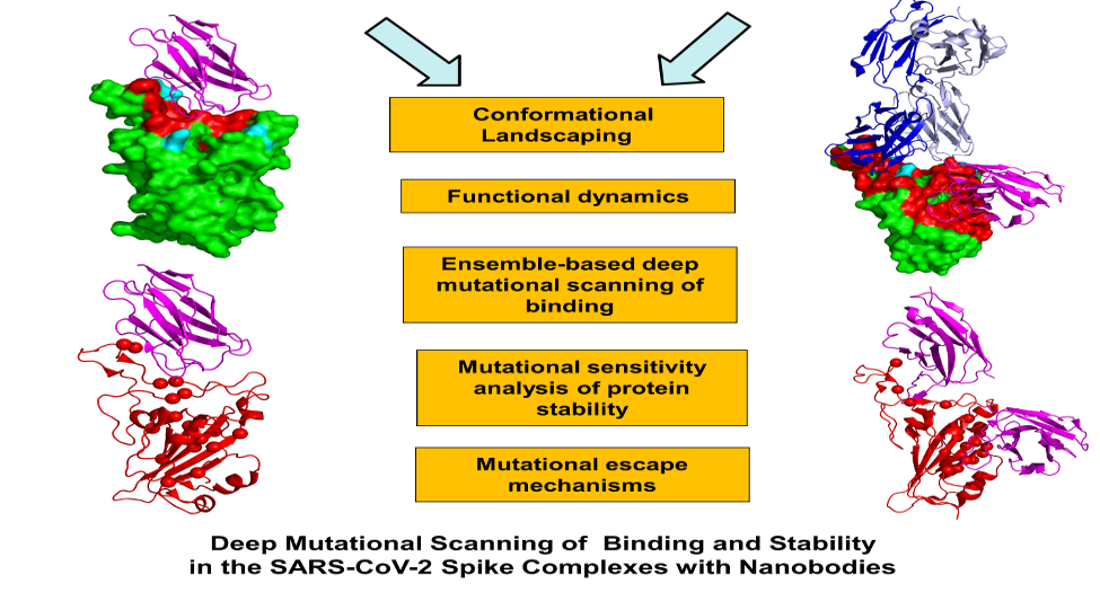Preprint
Article
Dissecting Molecular Determinants of Mutational Escape Mechanisms in the SARS-CoV-2 Spike Protein Complexes with Nanobodies: Atomistic Simulations and Ensemble-Based Deep Mutational Scanning of Protein Stability and Binding Interactions
Altmetrics
Downloads
414
Views
416
Comments
0
supplementary.pdf (969.81KB )
This version is not peer-reviewed
Preprints on COVID-19 and SARS-CoV-2
Submitted:
09 July 2021
Posted:
13 July 2021
You are already at the latest version
Alerts
Abstract
Structural and biochemical studies have recently revealed a range of rationally engineered nanobodies with efficient neutralizing capacity against SARS-CoV-2 virus and resilience against mutational escape. In this work, we combined atomistic simulations and conformational dynamics analysis with the ensemble-based mutational profiling of binding interactions for a diverse panel of SARS-CoV-2 spike complexes with nanobodies. Using this computational toolkit, we identified dynamic signatures and binding affinity fingerprints for the SARS-CoV-2 spike protein complexes with nanobodies Nb6 and Nb20, VHH E, a pair combination VHH E+U, a biparatopic nanobody VHH VE, and a combination of CC12.3 antibody and VHH V/W nanobodies. Through ensemble-based deep mutational profiling of stability and binding affinities, we identify critical hotspots and characterize molecular mechanisms of SARS-CoV-2 spike protein binding with single ultra-potent nanobodies, nanobody cocktails and biparatopic nanobodies. By quantifying dynamic and energetic determinants of the SARS-CoV-2 S binding with nanobodies, we also examine the effects of circulating variants and escaping mutations. We found that mutational escape mechanisms may be controlled through structurally and energetically adaptable binding hotspots located in the host receptor-accessible binding epitope that are dynamically coupled to the stability centers in the distant epitope targeted by VHH U/V/W nanobodies. The results of this study suggested a mechanism in which through cooperative dynamic changes, nanobody combinations and biparatopic nanobody can modulate the global protein response and induce the increased resilience to common escape mutants.

Keywords:
Subject: Biology and Life Sciences - Biochemistry and Molecular Biology
Copyright: This open access article is published under a Creative Commons CC BY 4.0 license, which permit the free download, distribution, and reuse, provided that the author and preprint are cited in any reuse.
MDPI Initiatives
Important Links
© 2024 MDPI (Basel, Switzerland) unless otherwise stated





